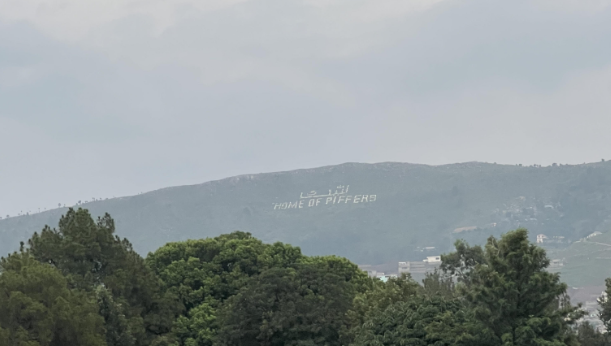It was a normal day as a commando: Hijackers had overrun a train and taken prisoners. It was up to me to stop them. Moving up the line of cars, I diligently shot my way through the hijackers until I finally reached a car with a new, unique enemy: a masked man, wielding deadly knives.
He wore a bulletproof coat, rendering my shots futile. Running up to me, he slashed and stabbed, again and again–until, in the arcade, I needed to add more tokens to continue playing this game. Getting up, I thought to myself: “A bulletproof coat! What a simple, yet elegant idea!”
The fact that the concept of “an enemy you can’t just shoot” was novel to me points to a key truth in pop culture. Be it Call of Duty or John Wick, action and adventure heroes from any medium tend to use guns heavily. The Star Wars franchise, for instance, is known for giving us the lightsaber, but most people in that galaxy far, far away prefer a trusty blaster.
Guns in movies do not directly cause gun violence in the real world. Overreliance on guns in the action genre is, however, a narrative concern. Think about it this way: do action heroes need to use guns? After all, the Cambridge Dictionary defines an action movie as “a type of film in which a lot of exciting things happen.” True, a shootout can be exciting, but so can other moments: running from enemies, physical stunts, or fights using non-firearm weapons like swords or crossbows. These can still be compelling to watch in isolation from guns.
It’s a fact that an action hero without a gun can work–because they already have. Over seven seasons and a 2016 reboot series, Richard Dean Anderson’s eponymous secret agent in MacGyver didn’t need a gun, instead using ingenuity and materials around him to save the day. Ex-assassin The Bride (Uma Thurman), of Quentin Tarantino’s acclaimed Kill Bill duology, tends more towards deadly swordplay and hand-to-hand combat than firearms. More recently, last year, I reviewed the action-comedy The Fall Guy with my brother Griffin. Its protagonist, stuntman Cole Seaver, uses stunt skills, fighting abilities, and athleticism to overcome armed thugs and solve a mystery, despite being unarmed.
Today, both MacGyver and the Kill Bill films are remembered nostalgically by many, and The Fall Guy has been well-received. Clearly, excitement, adventure, and critical acclaim are not beholden to guns.
“Action movies kind of have everything for me,” said senior Aaqib Shareef. “They often are made in a way that they can involve a couple different subgenres. Like, you could have action, you could have comedy, you could have an action-romance, a bunch of things combined into one.”
A good example of the action movie mix Shareef mentioned might be 2004’s National Treasure, starring Nicholas Cage. The film blends action-style chases with heist drama, alongside a throughline of solving a mystery and redeeming the protagonist’s family reputation. Couldn’t storytellers rely on these elements, as opposed to constant gunfights, to engage their audiences?
Not even video games, which are widely associated with brutal gun violence, are beholden to firearms for action. “From an outside perspective, games like Call of Duty and other popular shooters are kind of like the Taylor Swift…of video games,” Applications Trainer and eSports Club sponsor Damani Brown said. “They naturally get a lot of attention.” However, according to Brown, many enjoyable, action-filled video games do not feature much gun use. Brown points to Tekken, Street Fighter, and Persona 4 and 5 as prominent examples.
Admittedly, guns can have some place in action stories. If an action hero gets in a car chase, for example, it makes sense for the chasers to shoot at them. Aaqib Shareef feels guns should be used on a “case-to-case basis” in action movies. Characters in law enforcement, the military or organized crime might carry guns, he said.
It’s also possible to realistically portray the dangers of guns, and the necessity to handle them responsibly. According to Vox, this sensitivity can be influential to viewing audiences used to seeing heroes take a more cavalier attitude toward guns.
Shareef remembers an interesting quote from Obi-Wan Kenobi in Star Wars: Revenge of the Sith (2005). “…he calls guns…an ‘uncivilized weapon.’… And that is true in a sense. Guns are not civilized. They hold too much power. And you can definitely have a hero without [them] having that much power.” There’s much potential to explore when creative people dare to use ingenuity, combat prowess, emotional gravitas, and other alternatives to guns to tell compelling stories.















